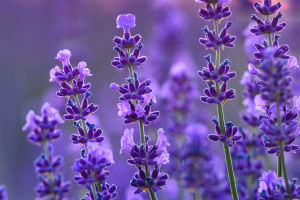Sunflowers, scientifically known as Helianthus annuus, are bright, towering plants that are loved for their vibrant yellow petals and cheerful appearance.
These annual herbs belong to the Asteraceae family and are known for their large, daisy-like flowers that track the sun's movement across the sky, which is how they earned their name.
While they are a common sight in gardens and fields worldwide, sunflowers have an interesting history and a range of practical uses that we might not always think about.
A Plant of Many Purposes
We often admire sunflowers for their beauty, but they have many more uses than just being ornamental. The seeds of sunflowers are edible and can be processed into oils or fats for human consumption. Additionally, sunflower oil is widely used for cooking and in products like margarine. But that’s not all—sunflowers also serve as a great source of animal feed. Some farmers even explore them as a potential biofuel. These versatile plants have far more value than just a bright garden addition.
The Journey from South America to the World
Sunflowers are native to South America, where they were first cultivated by ancient civilizations. They were used not only for food but also for their seeds, which were crushed for oil. In 1510, Spanish explorers introduced sunflowers to Europe, where they initially gained popularity as ornamental plants. It wasn’t until the 19th century, when the seeds were brought back to North America from Eastern Europe, that sunflowers became more widely cultivated for their oil and seeds.
The Ideal Growing Conditions
We can grow sunflowers in a variety of environments, but they thrive in sunny, open spaces with well-drained soil. Whether it’s a field, a backyard, or along roadsides, sunflowers love areas that are exposed to plenty of sunlight. In fact, they prefer growing in dry, open areas like grasslands and deserts. While they can tolerate some shade, the more sunlight they get, the better they grow. For anyone interested in growing them, it's crucial to provide them with a spot where they will get plenty of direct sunlight.
How to Grow Sunflowers
Growing sunflowers can be easy if we keep a few things in mind. First, plant sunflower seeds in well-drained soil. These plants grow best in soil that is rich in nutrients but not overly wet. Sunflowers should be spaced about 6-12 inches apart to allow for their large heads to bloom fully. It’s important to water them consistently, but don’t overdo it—sunflowers prefer moderate watering and do not like to sit in waterlogged soil. For those growing them in containers, make sure the pots have proper drainage.
The Fascinating Sunflower Flowerhead
One of the most interesting features of sunflowers is their massive flowerheads. These heads can range from 10 to 30 centimeters in diameter and are made up of both yellow, petal-like florets and numerous small, tubular florets in the center. Sunflowers are known for their heliotropic behavior, meaning the flower heads follow the sun’s movement during the day. However, once the flowers mature, they generally face east, making them easy to spot even on cloudy days.
The Symbolism of Sunflowers
Besides their practical uses and beauty, sunflowers hold deep symbolic meaning in many cultures. They are often seen as a symbol of happiness, warmth, and positivity. Their bright yellow petals are a reminder of the sun itself, evoking feelings of joy and optimism. In some cultures, they are also considered a symbol of loyalty and adoration. It’s no wonder that sunflowers are a popular choice in gardens and floral arrangements around the world.
Why Sunflowers Should Be in Your Garden
Sunflowers are much more than just pretty faces in our gardens. Their rich history, practical uses, and the joy they bring make them a truly special plant. If you're considering adding sunflowers to your garden, you're not just adding a beautiful flower, but a plant with a fascinating story and many benefits.
If you’re ready to bring some sunshine into your garden this season, why not give sunflowers a try? We’d love to hear how your sunflower journey unfolds!


